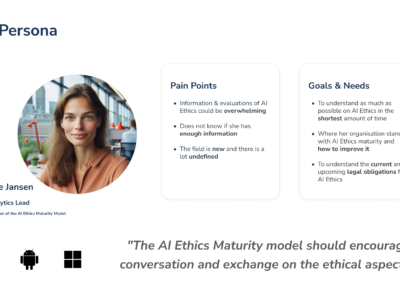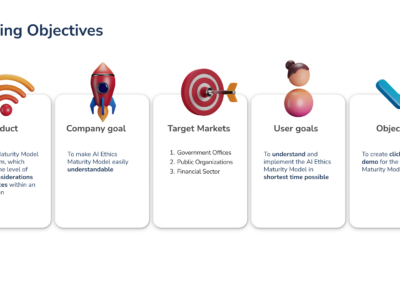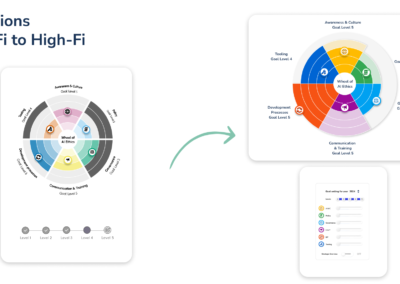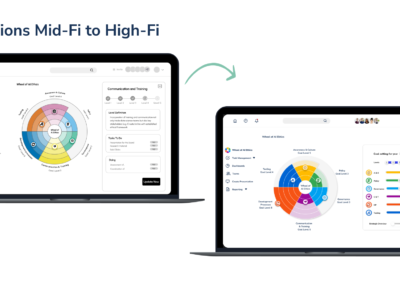How to Apply Ethical AI in Practice – Maturity Model & Framework
How to ensure ethical AI practices: A guide for businesses
Why ethical AI matters more than ever
“Ethics is not just a prerequisite, but the driver of technological progress.”
Imagine a world where AI technologies thrive in an environment steeped in ethics and responsibility. This is not a distant dream of the future, but an achievable vision that we have embraced in our pursuit of innovation. Our journey began with a simple question: how can we ensure ethical AI practices in a rapidly changing landscape? This case study illustrates our answer to that question, with a focus on the AI Ethics Maturity Model, developed by EDSA, with support from InnoValor to adopt and implement the model at organizations. During our UX Design project, our team gained valuable insights and has designed a UX/UI prototype to interact with the model.
Problem statement:
Government officials need to find a way to understand the AI Ethics maturity model, which stage their organization is at and improvement possibilities because they don’t want to lose time reading long ethics reports and feel overwhelmed about the quantity of information.
Situation analysis: The need for ethics in AI

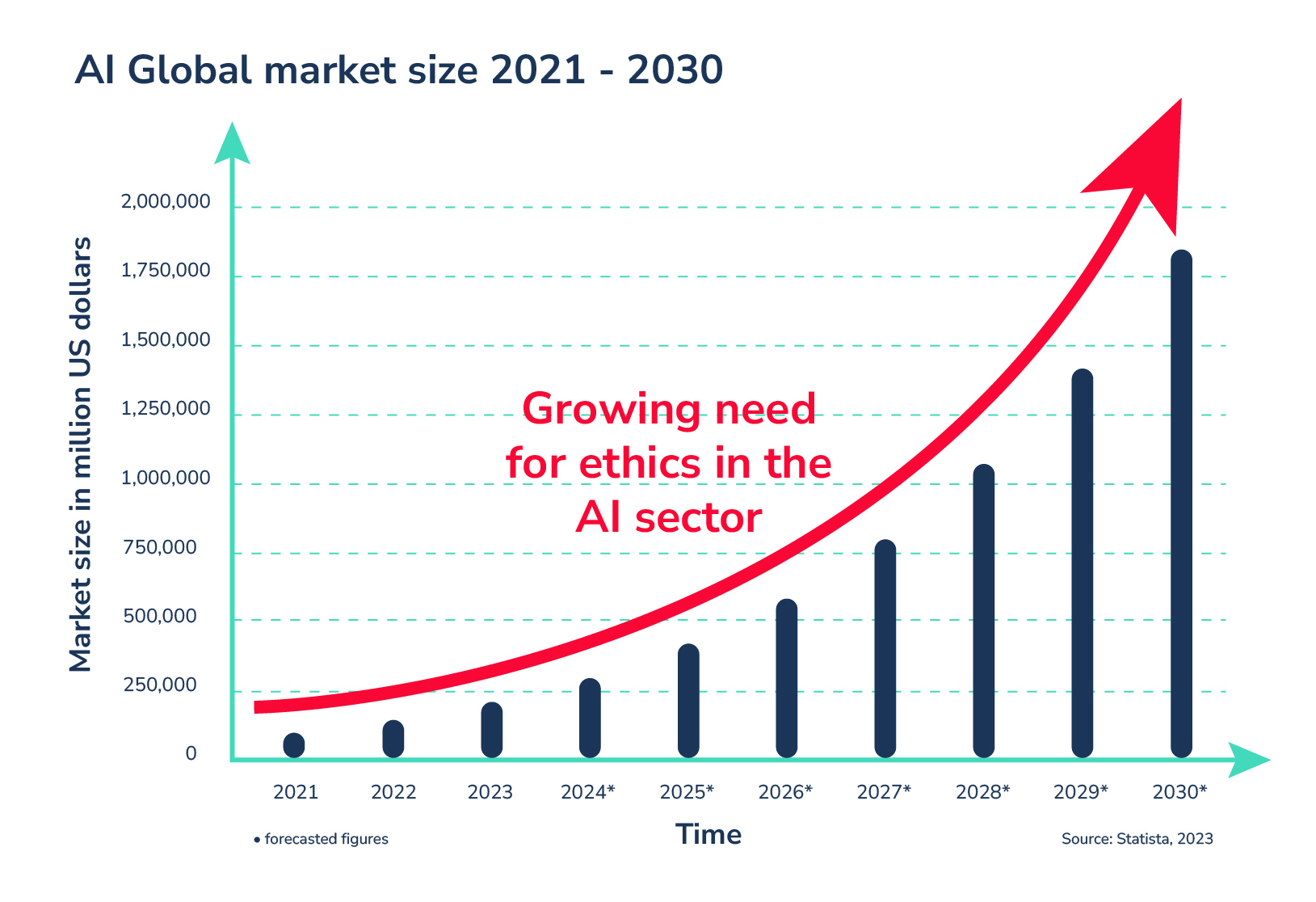
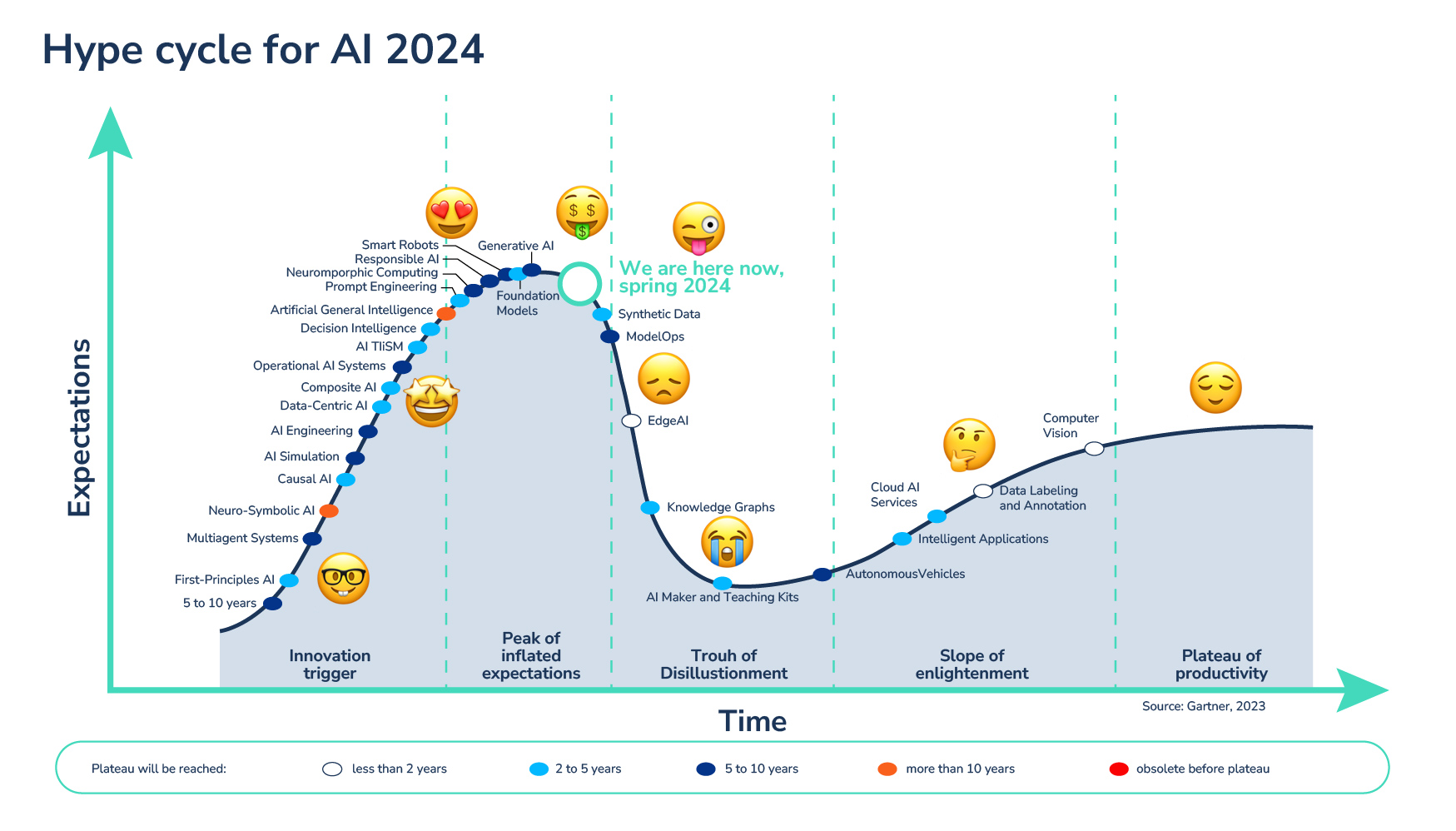

In the rapid rise of AI technologies, ethics have become crucial. Companies face the challenge of taking responsibility for the impact of their AI systems on society.
The lack of clear ethical guidelines can lead to misuse of user data, discriminatory algorithms and lack of transparency in decision-making processes. In this context, our team has designed a UX/UI prototype to interact with the AI Ethics Maturity Model, as a guide for organizations to promote responsible AI practices.
“In the world of AI, ethics is not a luxury, but an absolute necessity.”
Charting the course of ethical AI: Insights unveiled
In the bustling realm of artificial intelligence, where innovation meets ethics, our journey began. With the EU crafting new regulations, the need for ethical AI practices became paramount. InnoValor, a pioneer in the field, sought a guiding tool to navigate this shifting landscape.
As we embarked on our design sprint, the scope became clear: fashion an interactive model for AI ethics maturity. Our path intersected with competitors like Salesforce and Smartsheet, but our fusion of ethics and maturity set us apart.
User interviews became our compass, revealing the intricate needs of individuals like Melanie Jansen, a Lead Data Analyst navigating the complexities of AI ethics. Her struggles with overwhelming information and the ambiguous nature of the field illuminated our path forward.
Our toolkit expanded to include stakeholder interviews and competitor analyses. Each component added depth to our understanding and propelled us closer to our goal.
Privacy notice: due to privacy and confidentiality, detailed UX research findings have been omitted.
Solution/Implementation: Innovalors AI ethics maturity model in action
The AI ethics maturity model provides a structured approach to evaluate, refine and strengthen AI-related processes, policies and cultural norms.
By placing a strong emphasis on awareness, accountability and transparency, the model helps organisations balance innovation and social good.
Our UX Design team worked closely to create a user-friendly demo of the model, allowing users to seamlessly explore and receive guided insights to improve their understanding and implementation of ethical AI practices.
In response to the growing need for ethical guidance in the rapidly evolving world of AI technologies, we have developed the AI ethics maturity model. This model provides a structured approach to evaluating, refining and strengthening the ethics of AI, and is designed to help organisations balance innovation and social welfare.
“With the AI ethics maturity model, we are laying the foundation for ethical technological innovation.”
Results/Learning points: The path to accountability
Throughout this project, we have learned valuable lessons that have not only deepened our understanding of ethics in AI, but also increased our capacity to make impactful decisions in complex situations. Sharing our experiences and insights helps to foster understanding, promote the AI ethics maturity model and encourage decision-making on ethical AI practices.
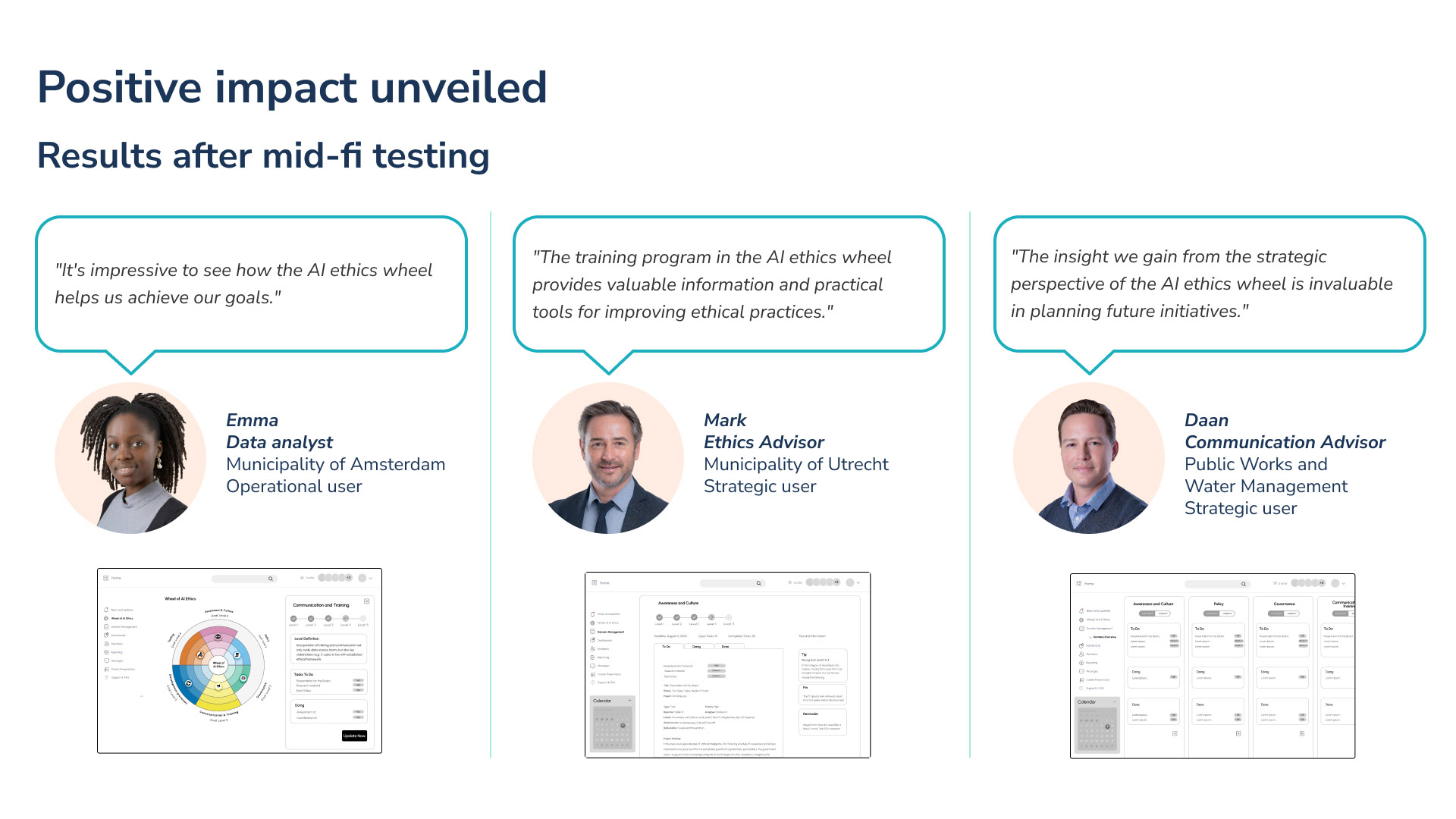
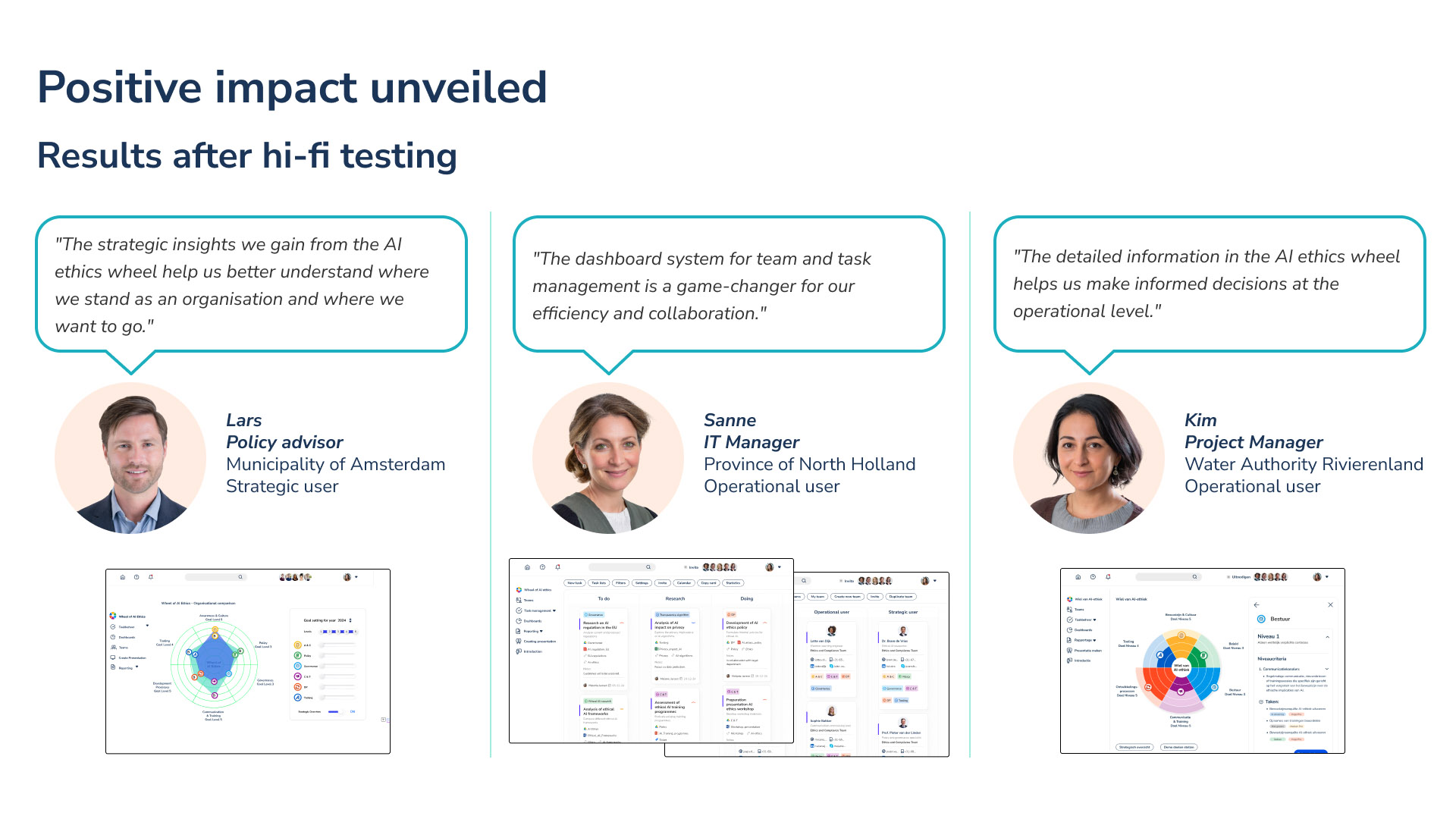
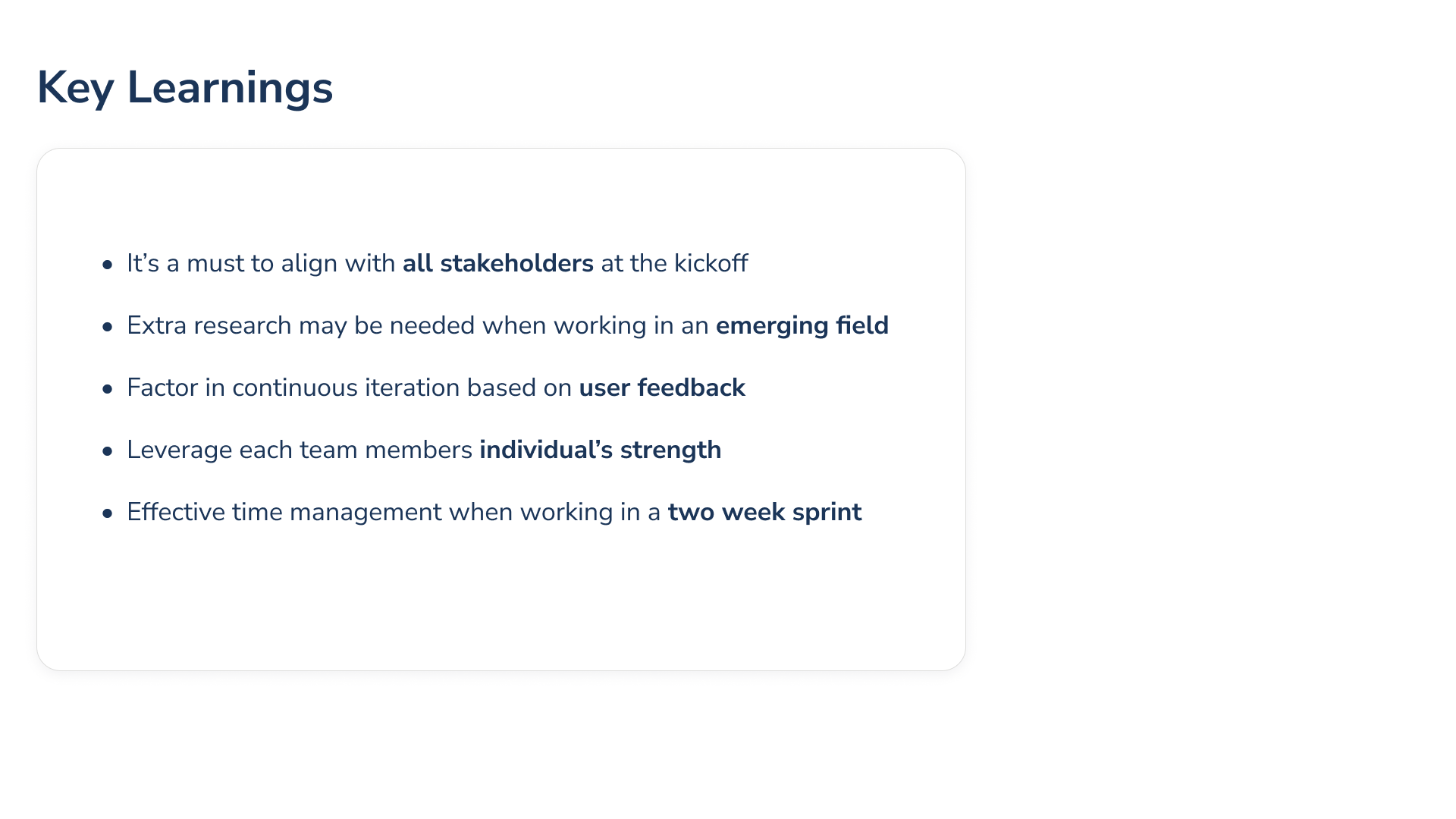
“Let ethics in AI not be just an idea, but a driving force for positive change.”
Conclusion: A call to action
As a UX Designer, I nurture a deep commitment to ethics and honesty in my work. This story not only illustrates our efforts to promote ethical AI practices, but also invites others to join us in this crucial mission. Together, let us strive for a world where AI technologies thrive in an environment of ethics and responsibility, where innovation goes hand in hand with humanity. And this has led me to tell this story here in this case study.
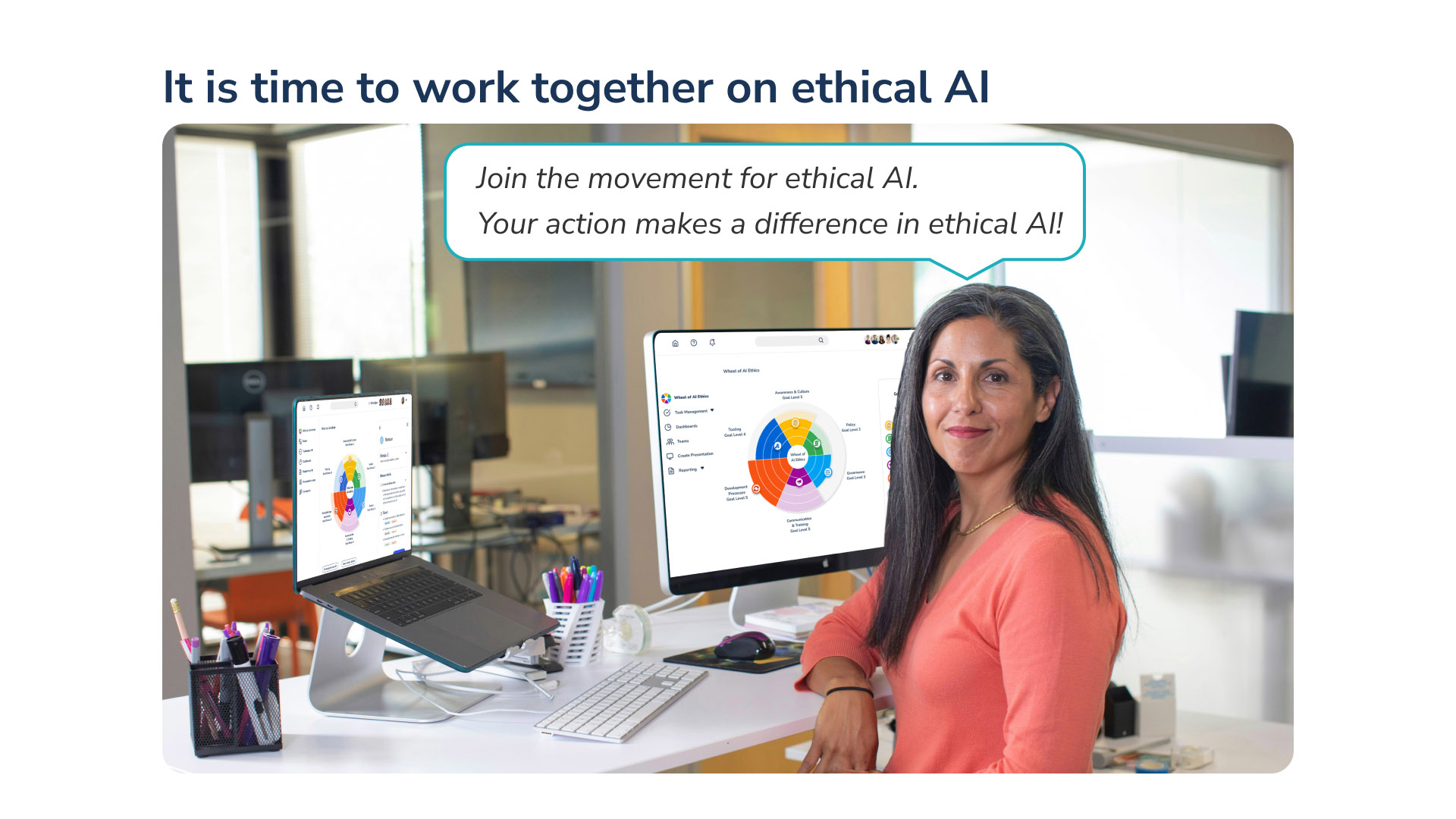
“By integrating ethics into AI, we are building a future where technology serves people and society.”
Gratitude
Our UX Design Team, including Carlotta Katahara, Martina Zekovic, Anna Ptasińska, Michael R Misurell, collaborated passionately to craft a user experience we’re excited to share. We extend heartfelt thanks to our partner, InnoValor, for their invaluable contributions in guiding us towards our goal of ethical AI implementation. From digital identities to privacy and innovative business models, InnoValor leads the way in navigating the complexities of the digital landscape.

